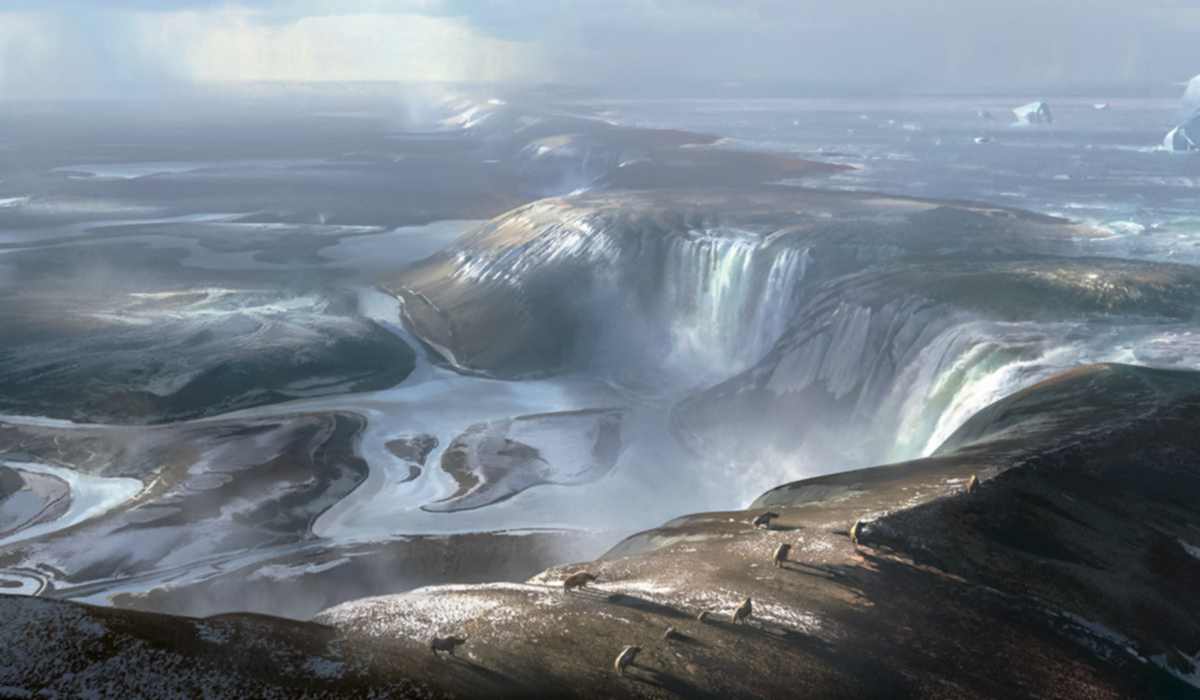- Why are there Cenotes in Mexico?
- Why are Cenotes important?
- What created cenotes?
- What does “Cenote” mean?
- What is the reason and use of a Cenote?
- How long did it take for cenotes to form?
- What rock are Cenotes made of?
- Can I see fossils in the Cenote?
- When did the meteor hit?
- What did the meteor do?
- What happened to the temperature during the ice age?
- What is the proof for this?
- Are there Stalactites in the Blue Hole, in Belize?
- What caused the erosion of the rocks?
- What causes the cave to collapse?
- Is it an underground river?
- How can Stalactites grow in the water?
- How quickly do they grow?
- Why were Cenotes important to the Mayans?
- What is the history of the Mayans and Cenotes?
Why are there Cenotes in Mexico?
There are many cenotes in the Yucatan peninsula of Mexico because of the geology of the region. The rocks are limestone and have eroded over a very long time.
Why are Cenotes important?
Cenotes are very important for the nature of the Yucatan. The cenote and the larger cave system that is is an access point to transport large amounts of water underneath the jungle so they are like the veins of the earth. Bringing filtered water through the ground to the trees whose roots reach down into the Great Mayan Aquifer.
What created cenotes?
Cenotes are created when cave passageways become so big that the roof falls in. A typical cenote is a round hole with a pile of rocks in the middle and access to water around the side.
What does “Cenote” mean?
Cenote comes from the Maya word for cenotes “Tzonot.” In English, it is a “sinkhole.”
What is the reason and use of a Cenote?
Cenotes are used as a water source and they are a sacred place for the Maya.
Now they are used for Scuba Diving, Snorkeling and escaping from the hot Mexican sun.
How long did it take for cenotes to form?
Cenotes and the underwater cave systems, for which they are an access point, have formed over millions of years.
What rock are Cenotes made of?
Limestone Rock. The top layer of rock on the Yucatan is limestone. Limestone rock is formed under the sea. All of the shellfish, coral and other marine life dies and falls to the bottom of the sea. It gets compacted and, under pressure, forms limestone, which is very rich from calcium form all of the bones and shells of the dead marine life.
Can I see fossils in the Cenote?
We can still observe the fossils in the rocks today. They offer a small window onto the life that existed here millions of years ago. From this observable record, we deduce that the Yucatan was once a shallow coral reef system. It would have been awesome to come and dive here 100 million years ago.
When did the meteor hit?
Then the meteor hit. 66 million years ago a meteor at least 10 km wide struck the northwest of what is now the Yucatan peninsula. The Chicxulub crater is an impact crater buried near the town of Chicxulub.
The date of the Chicxulub impactor, which created it, coincides precisely with the Cretaceous–Paleogene periods of history. The crater is more than 180 kilometers in diameter and 20 km in-depth, deep into the continental crust of the region of about 10–30 km depth. It makes the feature the third largest of the confirmed impact structures on Earth.
What did the meteor do?
The meteor shattered the brittle limestone rock creating numerous cracks running out in all directions. It disrupted the global climate. The dust cloud would have blocked out the light from the sun for months or years. The temperature of the earth plummeted and started a cyclical period of ice ages. We can assume that these chaotic climate changes wiped out the last of the great lizard dinosaurs as this is when their fossil record ends.

What happened to the temperature during the ice age?
The temperature of the earth rose and fell as the ice age came and went, taking a hundred thousand years to complete a cycle. Sea levels rose and fell as the vast ice sheets expanded then contracted. The more water stored in the ice sheets the less in the sea.
What is the proof for this?
We have evidence for this in the form of the stalactites and stalagmites. These will only form in a dry cave. So everywhere we see stalagmites and stalagmites we know that it was dry when they were formed.
Are there Stalactites in the Blue Hole, in Belize?
There are stalactites in the blue hole in Belize, 50 meters down. So we know that the sea level would have to be 50m lower, or the land would have to be higher, than today, for them to have formed.
What caused the erosion of the rocks?
It is this rising and falling of the sea level and the erosion of the limestone crust, that has created the largest underground cave system in the world, right here in the Yucatan peninsula of Mexico.
What causes the cave to collapse?
During the ice age when sea level was low, water fell as rain, flowed down through the cracks in the rock down trying to get out to the sea. Over time very small cracks were eaten away. The sea levels then rose as the earth emerged from the ice age, flooding the tunnels with water.
The force of the water eroded more of the sides and the roof. But having the water in the tunnels gives it structural integrity, the water holds the roof up. It is when the earth returned to an ice age, the sea levels fell, and there is not enough force to hold up the roof. At its weakest points, the roof of these underground caves collapses, creating a Cenote.
Is it an underground river?
A Cenote is a part of the underground river system where the roof has collapsed. Typically it is a round hole, with a big pile of rocks in the middle and entrances to the cave on either side. Usually, there is an upstream and a downstream cave.
How can Stalactites grow in the water?
They can’t they must form above the water. The isotherms, stalactites, stalagmites, and other beautiful cave formations are formed when the water levels are low. The waterfalls as H2O and mixes with the Carbon Dioxide in the atmosphere forming Carbonic Acid. As this is working its way through the rock it eats away and absorbs the Calcium from the limestone. When this solution reaches the roof of the dry cave, the calcium salts are deposited.
How quickly do they grow?
These layers grow very slow and very slowly produce the vast stalactites that hang down from the ceiling, stalagmites that grow up from the floor and a range of weird and wonderful shapes. As the caves are now flooded they have stopped growing and won’t start growing again until we go back into an ice age and sea levels fall.
Why were Cenotes important to the Mayans?
Cenotes were important to the Mayan civilization because they are a source of freshwater. In the jungle, there is nowhere else to get water to drink. So the cenotes were the source of Mayan water.
What is the history of the Mayans and Cenotes?
The Cenotes were important for the ancient Maya because it represented a gateway to the underworld, Xibalba. Xibalba is where the lords of death live and where people go when they die.
Cenote Diving Tulum Mexico – Best Cenotes Guide
When you visit the Riviera Maya, you must explore the Cenotes. The best way to discover this new world is underwater, Cenote Diving Tulum
Halocline – Where Fresh Water and Salt Water Meet is called a Halocline 2021
Halocline is what happens when freshwater and saltwater meet.

